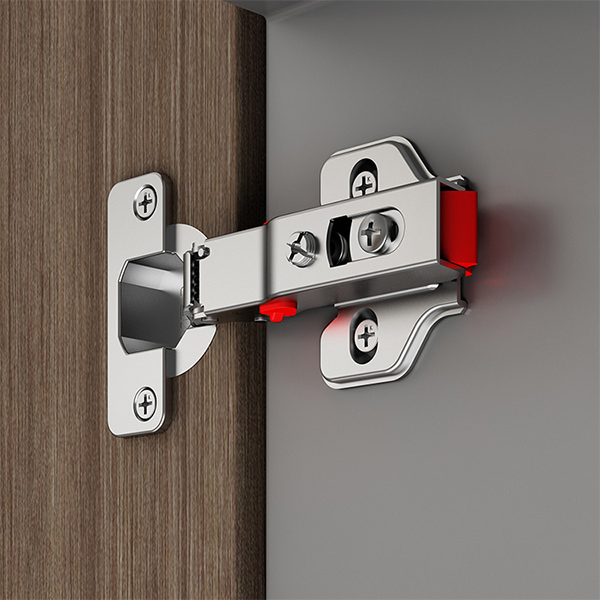Cabinet hinges may seem insignificant, but they play a crucial role in both the functionality and aesthetics of cabinets. Among the various types of hinges, offset cabinet hinges stand out for their unique design and specific application scenarios. Understanding what offset hinges are and when to use them can help you achieve a perfect fit and the final effect.
What Are Offset Cabinet Hinges?
Offset cabinet hinges are specially designed for covering cabinet doors that are not completely flush with the cabinet frame. Offset refers to the distance between the door and the surface of the cabinet when it is closed.
Unlike the flat hinges used for built-in doors (installed within the cabinet frame), offset hinges adopt a curved or crank design, causing the door to protrude slightly forward. This structure offers greater clearance and flexibility. They are particularly suitable for old-fashioned cabinets and those with slightly deformed wooden frames, as they can ensure smooth opening and closing and an aesthetically pleasing fit even when the cabinet frame is not precisely aligned.
Offset cabinet hinges are typically made of durable metals such as brass, steel, or nickel, and offer a variety of surface treatments to match different styles of cabinet designs.

How Offset Hinges Work
The most notable feature of an offset hinge is its L-shaped structure. One side of the hinge is fixed to the cabinet frame, while the other side is installed on the back of the door panel. The bending or offset design of the hinge arm enables the door panel to overlap with the frame, thereby creating the necessary gap. When the door panel opens outward, the hinge moves outward to ensure smooth movement of the door panel and avoid scratching the edge of the cabinet.
Due to this geometric structure, offset hinges are particularly common in frame-type cabinets, where the cabinet body has a front frame around the opening. In these designs, offset cabinet hinges can compensate for the thickness of the frame, allowing the door panel to close smoothly.
When to Use Offset Cabinet Hinges
Offset hinges are not suitable for all cabinet designs, but they are indispensable in some cases. The following are some of the most commonly used scenarios for offset hinges:
Retrofits and Repairs on Older Cabinets: Many old-fashioned or medieval-style cabinets feature covered door panels and offset hinges. When repairing or renovating such cabinets, using hinges of the same style as the original ones can ensure that the door panels are installed correctly without the need for major modifications.
Face-Frame Cabinetry: Offset hinges are particularly suitable for frame-type cabinets, where the frame extends beyond the cabinet body. The use of offset hinges enables the door panel to partially cover the surface of the frame, while leaving sufficient clearance for movement to prevent the door panel from rubbing against or getting stuck to the frame when opening or closing.
Decorative or Exposed Hardware Designs: Unlike the concealed hinge commonly used in modern kitchens, the offset hinge belongs to exposed hardware. This means that the hinges remain partially visible when the cabinet door is closed, becoming part of the overall design.
Non-Standard Cabinet Construction: When the cabinet door or frame is slightly uneven, offset hinges can help correct the misalignment, making the installation more seamless and ensuring the normal opening and closing of the door as well as visual symmetry.
Conclusion
In today's simple and modern cabinet designs, offset cabinet hinges may not be as common as hidden hinges, but they remain a practical and fashionable choice for many projects. Their unique design allows for flexibility in cabinet construction, particularly with overlay doors and face-frame cabinets.